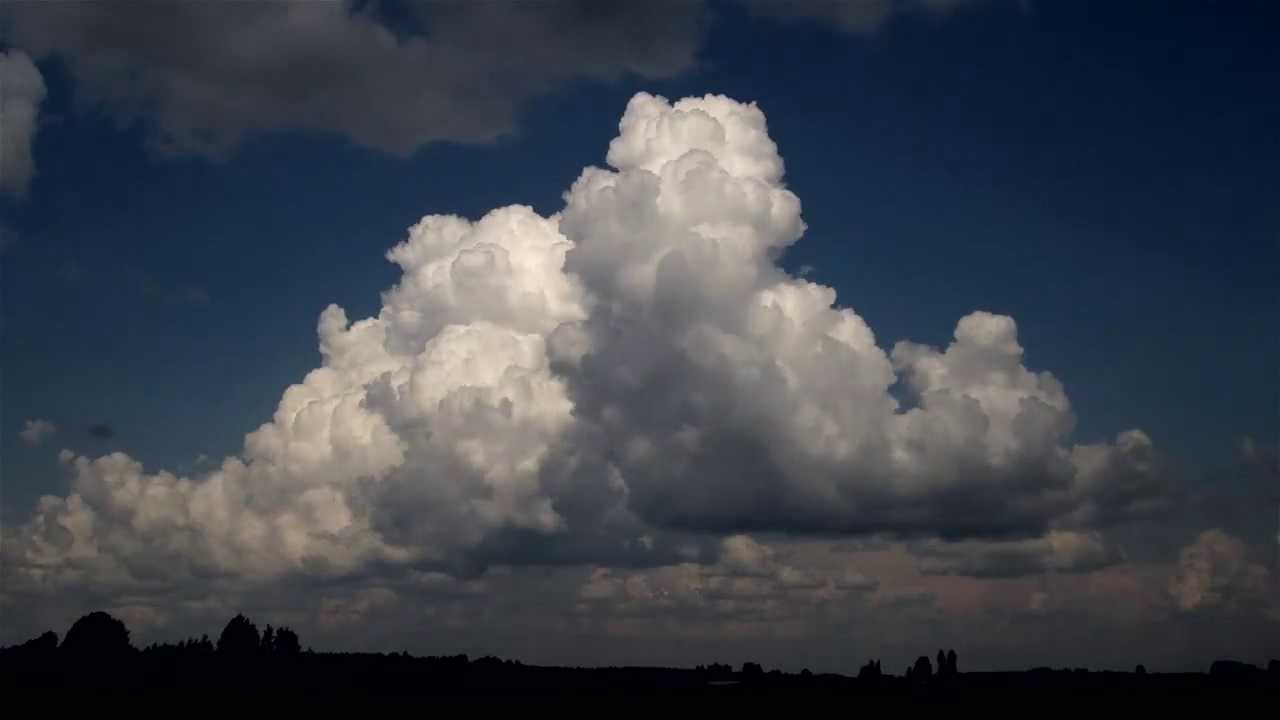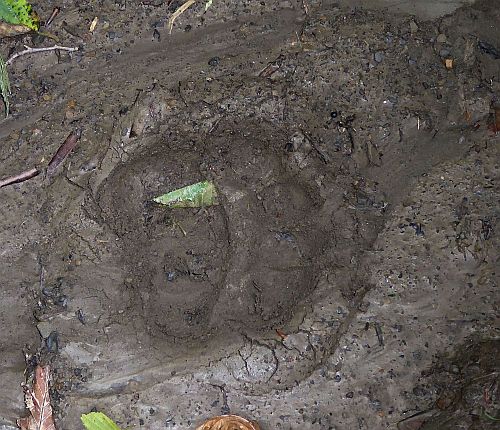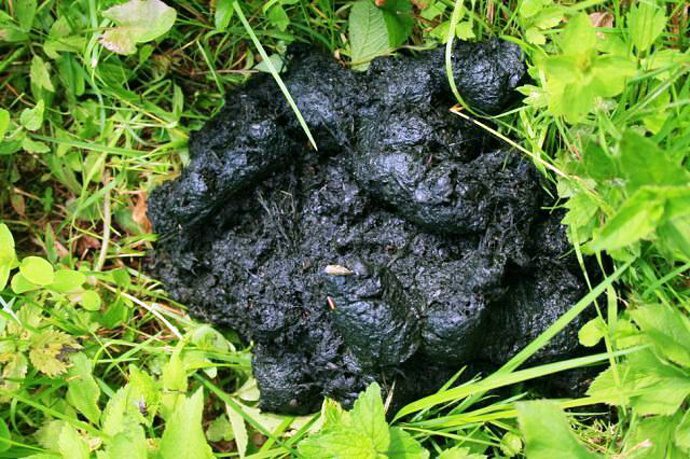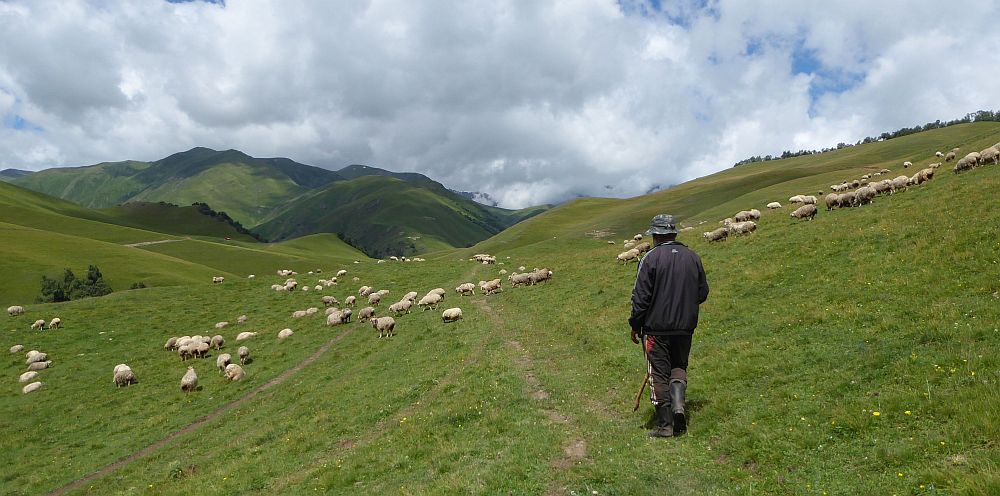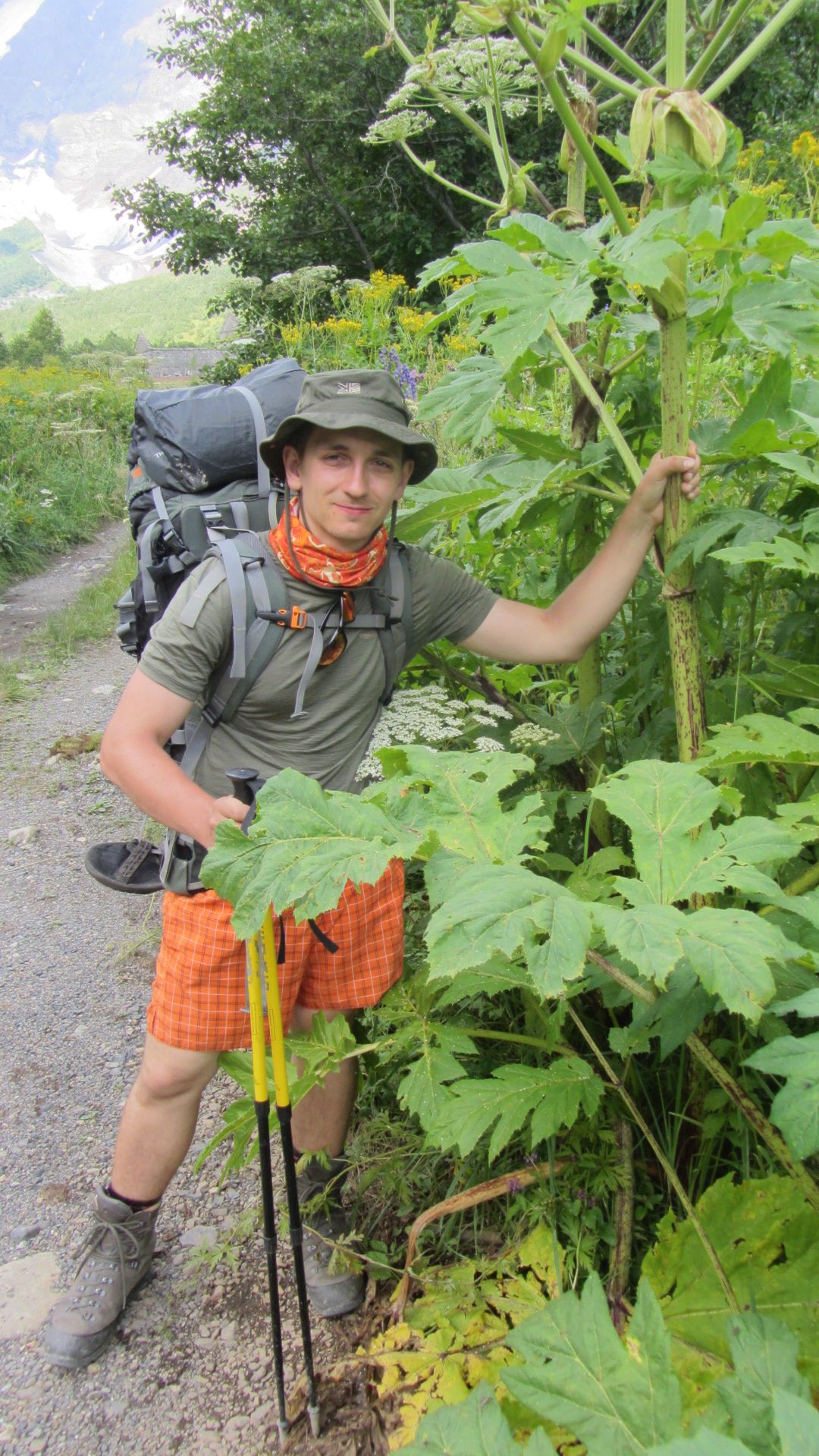Stay Safe
Is Georgia a dangerous country? Quite the opposite, but still, safety issues shouldn't be understimated - the danger usually lurks where you the least expect it. The mountain rescue system is only being developed and phone coverage in remote mountain areas is virtually non-existent. Therefore, it's usually better to be self-sufficient.
During hiking in Georgia, one should watch out for several hazards. Some of them are relevant to any trekking trip, other's are more area-specific. Here is the short and incomplete list of troubles you can encounter.
Better to be alive and wet than dry and dead
There are not many things that command so much respect in the hearts of hikers as a nice, old-school thunderstorm. One can outwrestle a bear, escape from the roaring river, but the lightning? Boom and you are done. It´s like playing Russian Roulette with nature. OK, and now, after we did set the atmosphere, let´s get to the practical stuff - how not to get hit.
Prevention
The easiest way to avoid being struck by the lightning is the avoid the storms altogether. Of course, this is easier said than done, but there are still several ways to minimize the risk. Optimal planning of the trek is the first of them. Storms in Caucasus mostly develop at two periods of the day - after midnight and in the early afternoon. Therefore, it´s usually safer to start early and reach the high point of your hike before noon so you are not too exposed when the storm really hits.
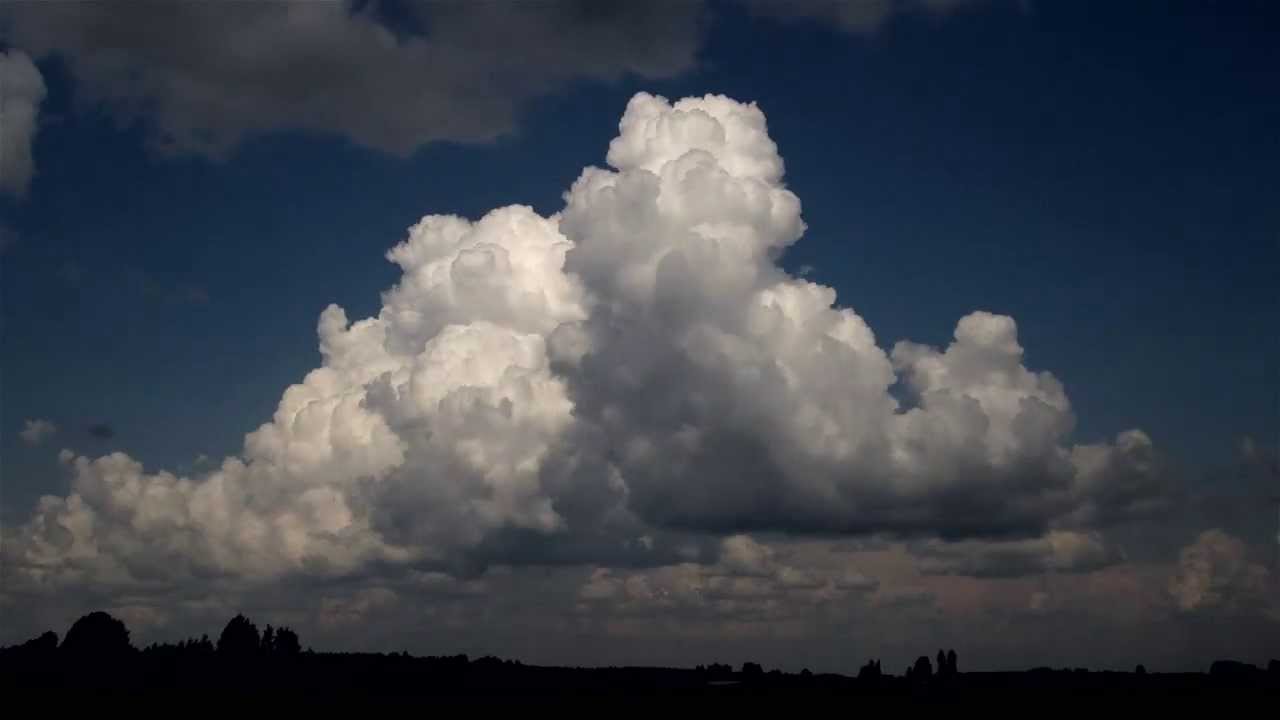
Forming cumulonimbus
Of course, some hikes have no “high point” as you spend most of the time traversing the ridge. In these cases, pay extra caution to your surroundings. Look for large, puffy cumulus clouds on the horizon. If they start growing and develop darker underbellies (cumulonimbus cloud, the shape of an anvil), you can expect a storm.
At the same time, monitor the terrain around you, look for available escape routes and places offering some protection in case the storm really hits.
Also, it´s good to check the strength and direction of the wind so you know from where is the weather "coming" and which area needś to be monitored more closely. Sudden, cool gusts of wind also indicate large differences in pressure, which can be a sign of the advancing storm fronts.
And, I almost forgot, but whenever you can … check the weather forecast. Guys doing them deserve much more praise than they get...
What to do during the storm
During a storm, you have just a single task - not to make yourself a target. The lightning will most likely hit tall, protruding objects such as elevated rocks or lonely trees. Therefore, you really don´t want “to stick out”.
If you are in the forest, you should be fine. You can keep walking or hide beneath some smaller trees.
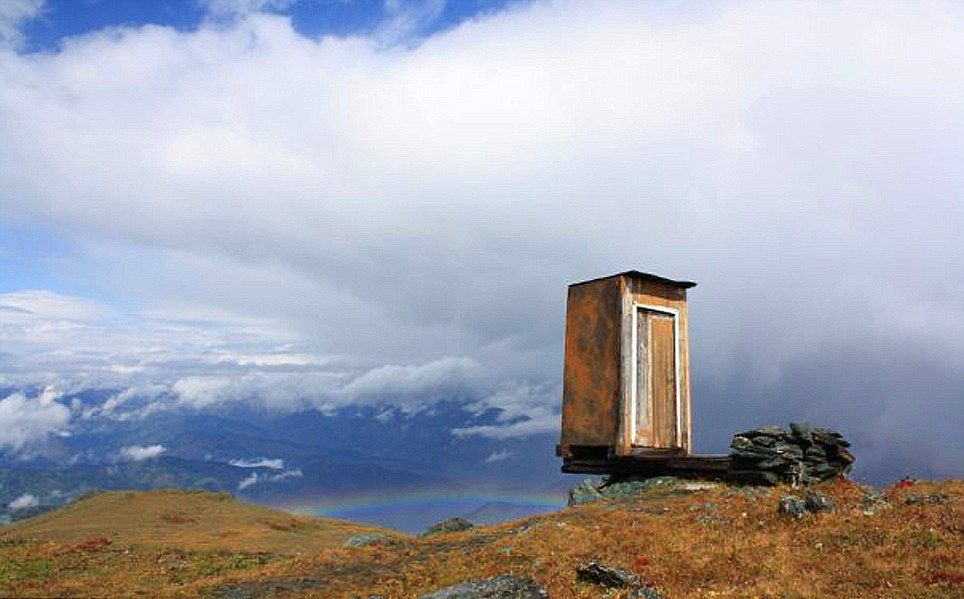
Not the best hideout during the storm
If you are outside of the forest, but not completely in the open (bottom of the valley, deep gully), you should seek a safe place. The safest places to hide are grounded buildings and cars, but those are pretty rare in the wilderness. Simple shepherd´s huts won´t protect you too much - if you decide to use it anyway, stay away from that iron tube they have instead of the chimney.
Hiding below rock overhangs and in shallow caves can be also pretty risky. Why? After the lightning strikes the rock, it usually seeks the shortest and easiest way to the ground. Mostly it goes downward on the surface, but it can also “jump” over smaller gaps or crevices. So if someone stands beneath such rocky overhand, he may get hit in the head by weaker, but still very dangerous current.
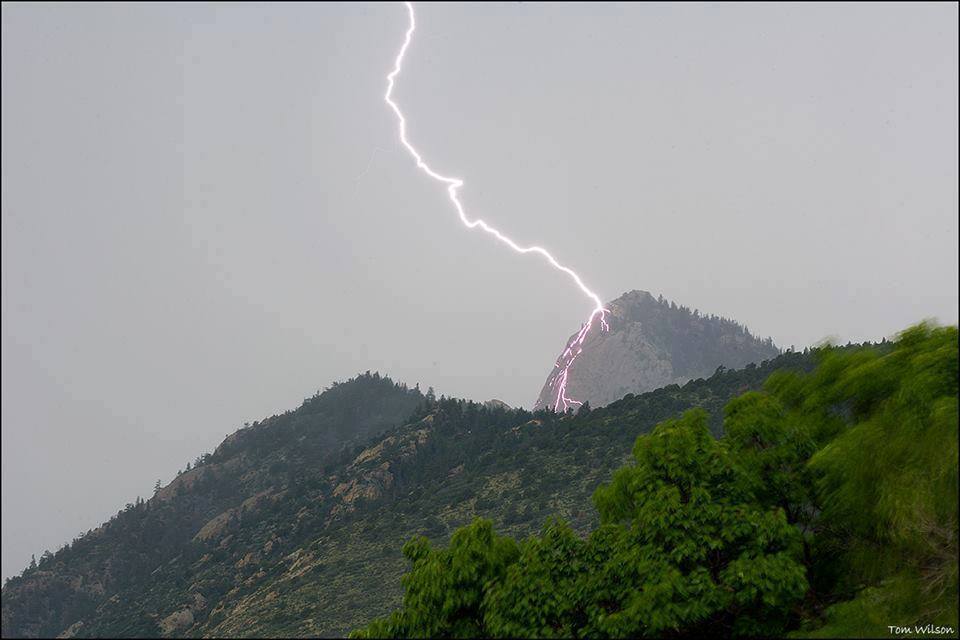
Lightning heading to the ground
When you are in partially exposed terrain, you should try to use “zone of protection” provided by higher targets. That means, that if you are near, but not beneath that high lonely tree, you should be safe. High objects provide “zone of protection” with the radius equal to their prominence over the terrain. That means, that if you are 5-20 meters away from a lonely tree 20 meters high, you should be fine - tree attracts all lightning which could otherwise hit you.
Strike of the lightning can be also predicted, at least to some degree. If your hair stands up and you feel a tingling sensation on your skin, the lightning may soon strike nearby. In such situation, immediately crouch down, put your feet together (try to stand on yours soles to minimize contact with the ground) and cover your ears - thunder is extremely loud and could easily tear your eardrums.
And now the worst case scenario - you are in the eye of the storm and there is nowhere to hide. In this case, it´s too late to try to reach shelter. Running away is pointless and dangerous - lightning travels at the speed of over 200 000 mph and running person not only sticks out but also has greater step potential (as he makes longer steps) so he is in a bigger danger if the lightning hits nearby.
So what to do? If you are on the ridge, immediately descend, at least 30-50 elevation meters. Otherwise, just crouch on the ground, cover yourself with a raincoat and wait. For better comfort and insulation, you may also sit on your backpack.
Also, shut down electronic devices and remove metal jewelry such as rings - metal doesn´t attract lightning, but is a good conductor so you may get burned if it strikes nearby. If you are in a bigger group, spread out, so even if someone gets hurt, others can provide the first aid (usually CPR, as the cardiac arrest is the number one cause of death due to lightning strike).
After the storm passes and you are in the open, you should wait a bit more to reduce risk from stray lightning. Usually, it´s recommended to wait 20-30 minutes after the last thunder and only then continue with your journey.
Camping
Contrary to popular belief, the tent will not protect you from the lightning. Therefore, you have to pick your camping spot very carefully - even if it means that you won´t have the best possible morning view.
Again, your tent shouldn´t be the highest object in the area. Also, don´t build it too close to old, decayed trees, they may fall during the storm. And last but not least, don´t build it in spots which are suspiciously greener than the surrounding vegetation. Quite often, that´s where the water flows during heavy storms. And lying in the water in the middle of the storm is not only uncomfortable but also potentially dangerous.
"What should I do when I meet a bear?"
"You don't have to do anything. Bear will take care of everything."Slovak joke
Of all the potential hazards lurking in Caucasus, people most often ask me about bears. How many live there? Are they dangerous? Is it safe to go hiking at all?
I usually try to dispel their fears. Bears are shy and avoid contact with humans. I haven’t heard of single accident when hiker in Caucasus got hurt by a bear. But even if the danger is not that acute, its still better to know what can happen in order to minimize potential risks. After all, I met more than one Georgian trekking with rifle so I guess they have their reasons (I hope not all of them were poachers).
Georgian part of Caucasus nowadays harbors approximately 400 brown bears. Most of them retreated to the remote mountain valleys, where they inhabit upper part of forest belt. Several hiking trails traverse these valleys, so there is always a chance of an encounter. Every bear is different, but their behaviour in general can be predicted. Therefore its better to be prepared for possible scenarios so you know what to do.
Prevention
If bear detects you, he will usually get out of your way. However, they may not detect you in dense undergrowth, mist, when they feed themselves or if you are walkings against the wind. Therefore the best method to prevent encounter with a bear is to let him know you are coming. Let him know you are there - sing, whistle, clap with hands or trekking sticks. You don’t want to surprise a bear, - in such case there is much bigger chance that he will react aggresively. Be watchful, especially in the morning and evening, when are bears most active.
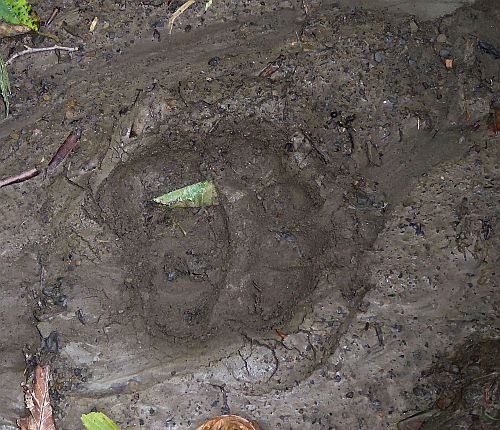
Bear track
Some people use “bear bells” - small bells they attach to their rucksacks. However, there is no consensus among experts whether they work or not so don’t rely only on them. They are not very loud, safer is to use the method of leading bear expert Stephen Herrero - to yodel.

Processed bear food
Equally important is not to lure bear to you. Do not camp at places with abundance of bear food (raspberries, blueberries) or at places with numerous animal tracks. Keep the camp clean - if you cook, wash cookware right after you finish eating. Don’t cook in your tent and if you have some strongly aromatic food or trash (bacon, canned fish), seal them in airtight containers.
Many experts recommend even harsher measures such as to cook at least 100 meters away from tent or hang food on trees. However, these practices come from USA where encounters with bears are much more common. In Georgia they could seem foolish.
Contact
If you see a bear not far from you, stand still and try to determine, if he knows you are there or not. If he is not aware of you, slowly walk away from him. Do it silently, don’t shout - you don’t want to surprise him. Never come closer to him, even if he seems to be calm.
If bear notices you, calmly identify yourself as a human - speak in a deep, soothing voice and wave arms above your head. Keep an eye on the bear, but avoid direct eye contact - bear could understand it as a sign of aggression. Don’t run away, it could provoke him into chasing you.
Attack
There are two types of bear attack on people - predatory and defensive. Eurasian brown bears living in Georgia almost never attack human as predators, most of their attacks are defensive. Still, it's good to know symptoms of defensive and offensive attacks, as reactions to them should be exactly the opposite.
There are several ways to identify defensive attack - before the actual attack, the bear tries to scare you, it huffs, barks and shows his teeth. He charges you with ears laid back and often stops before actual contact. He shows that he is nervous about your presence and you should go away. If you don't do it in time (but no running), then may come an actual attack.
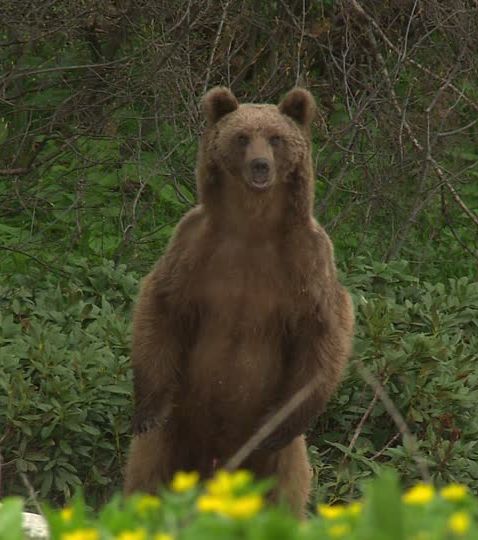
Bear trying to identify a possible threat
Once the bear makes physical contact with you, be passive, drop to the ground and play dead. Lie on your belly with yours legs together. Hold yours hands together behind your hear so they protect your neck. Bears during defensive attacks often focus on the human face, if it’s not protected. When bear senses that you are not dangerous anymore, he usually leaves.
During the offensive attack, bear doesn't bluff, he attacks directly with his ears erected. In such point there is no point in playing dead and you must fight for your life.
I guess that’s all for now. But as I really dont want this article to end with recommendations such as "fight for your life" or “bear focuses on human face”, I would like to stress once again that bears living in Caucasus don’t prey on humans and such attacks are extremely rare.
Our own unwariness and overconfidence pose us much greater danger than any bear.
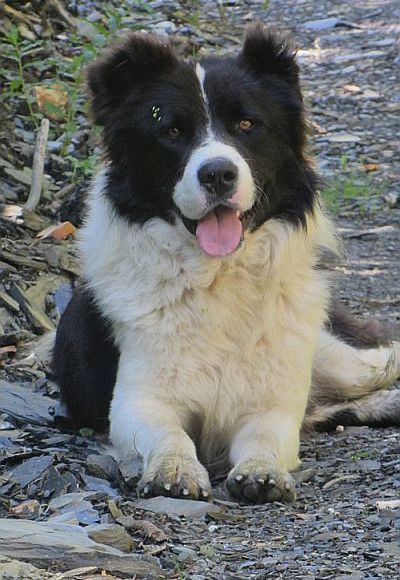
Shepherd´s dogs are not as dangerous as bears or wolves, but are usually a much bigger nuisance. That´s because during you stay in Georgia, there is a solid chance that you won´t see a single wild animal, but you will encounter countless shepherds dogs. In Georgian mountains, we mostly saw short-haired breed of Caucasian ovcharka called “nagazi”. However, there are several similar breeds used for herding and it's often hard to determine whether the dog can be classified as Georgian shepherd or not. But it doesn’t matter that much after all, especially in the moment when they bite you in the ass.
How to avoid problems with shepherd dogs? First of all, it´s necessary to realize that a dog is not some bloodthirsty beast trying to eat you at the first occasion. It´s just a trained animal trying to find balance between its sense of duty, laziness and fear of pain. If you don´t give him a reason, he won´t attack.
So, in a nutshell - don´t walk through flocks of sheep. Shepherd dogs are teritorial creatures and in such case they have no choice but to attack. If you come to the flock (doesn´t matter if you see any dogs or not), look for a shepherd - the safest passage through the flock is in his company. If he is not around, yell something like “gamarjobat!” and hope he will show up. If he doesn´t, walk around the flock, ideally uphill, so even if some dog decidesd to harass you, he has to attack upwards.
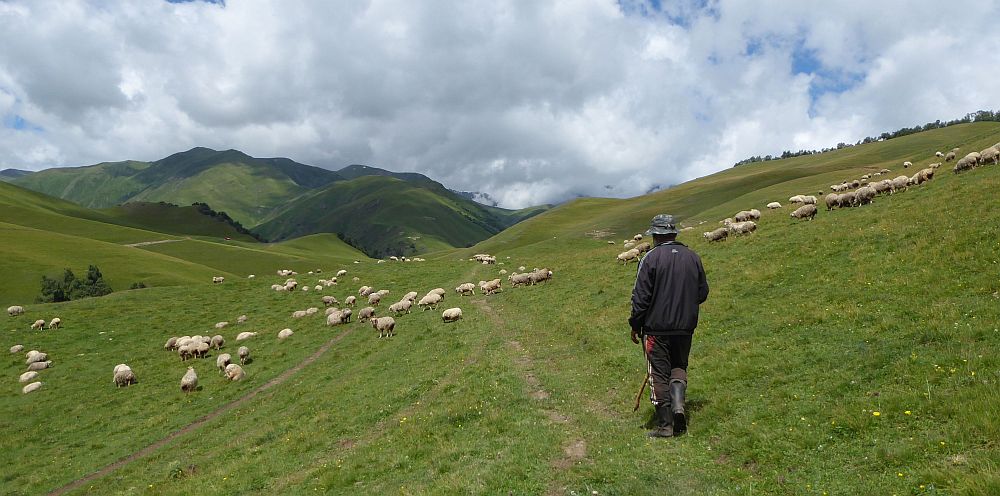
The safest passage through the flock of sheep
It’s also good to keep in mind that barking doesn’t always express aggression from dog’s side. Sometimes he just wants to alert everybody of your presence and show himself as a good guardian. Friendly shepherd dog is relaxed, wags his tail and stands “sideways” (you can see him from the side). On the opposite, the dog ready to attack faces you directly, growls, flattens his ears and bares his teeth.
If the dog confronts you, use your trekking pole or any other stick to keep him on distance - protect your “territory”. Don’t be afraid to poke him if he comes too close, but be prepared that he will try to grab it. If you don’t have any stick, pick some smaller stones or pices of soil. Then raise your hand - dogs understand this gesture well.
There are also other techniques how to fight these dogs (cover your secondary arm and use it as a shield, go for the eyes, etc), but the chance you would have to use them is really slim. I have no experience with it so I would just have to be googling. So instead, just one last advice - try to avoid the confrontation. If the dog blocks your path, it´s better to wait even 10-15 minutes for the shepherd than force your way forward and risk an injury.

Georgian shepherd dogs are very cute when small

...but that doesn't last for too long
Another, not so pleasant representatives of Georgian fauna. However, as with other animals, they will rather scare you than actually do some harm as they are shy and avoid humans whenever possible.
The most common snake occuring in Georgia is non-poisonous “ring snake”. It has a grey, unremarkable body, but can be easily identified thanks to the white stripe around his neck (as if he had a ring stuck around it ).
The only snakes in Georgia dangerous to humans are vipers - they can be recognized by a typical dark zig-zag stripe on his back . It´s possible to encounter 3 species:
Caucasus viper (vipera kaznakovi) - endemic to Caucasus, endangered and very rare. Grows up to 75cm. Can be found in the wetter mountain areas such as Svaneti or Adjara.
Lebetine viper (macrovipera lebetina)- large, blunt nosed viper, grows up to 1,5m. Lives mostly in dry, rocky areas of southeastern Georgia such Vashlovani National Park or around Davit Gareja.
Meadow viper (vipera ursinii) - this most widespread species of the viper can be found also in Georgia. Smallest of all vipers, it grows only up to 50cm.
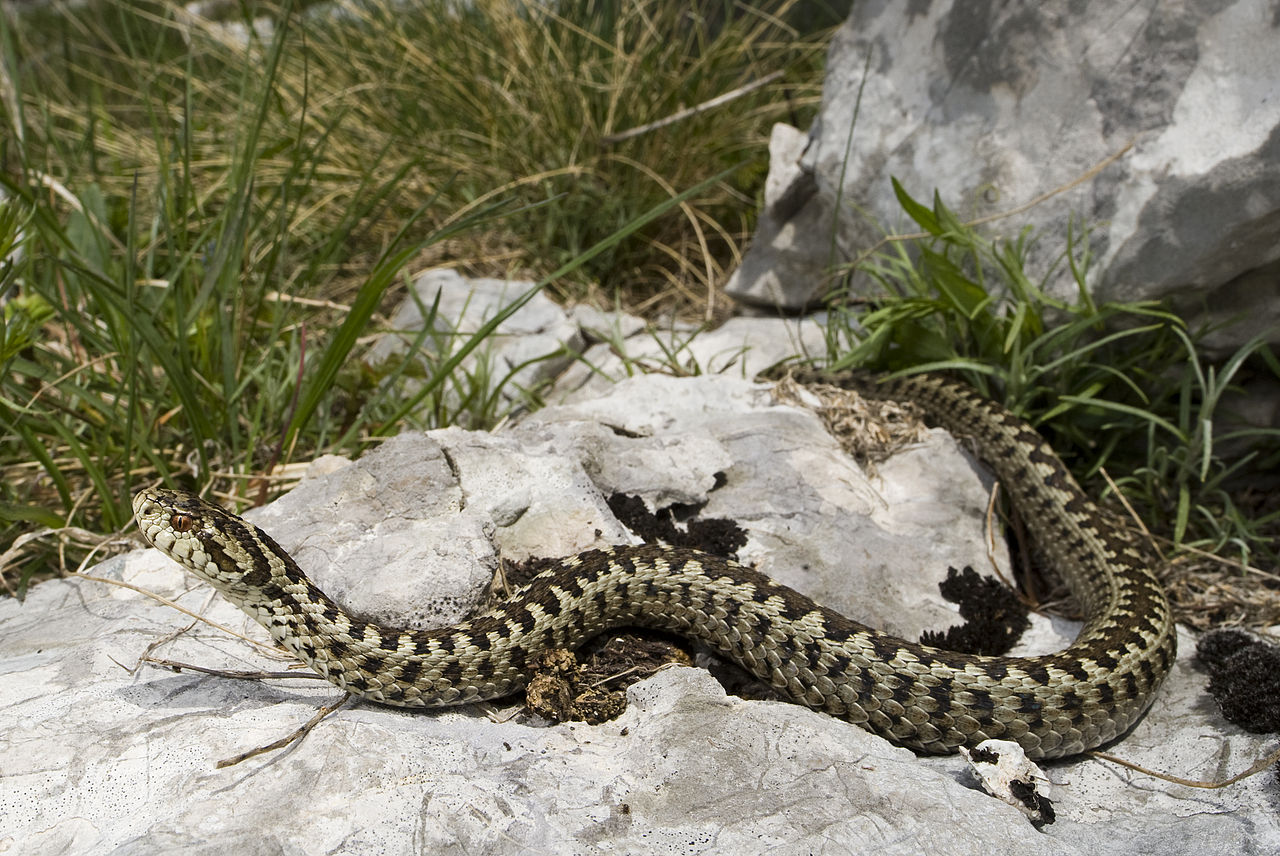
How to prevent a snake bite? Usually, no effort is needed, snakes are shy and prefer to “run” away. They attack only if they feel directly threatened. Still, you can reduce this risk by few simple measures.
The most effective of them are those most simple ones - watch your step and don’t stick your hands into narrow, dark crevices unless necessary.
Also, consider wearing sturdy hiking boots and long pants. Personally, I am often too lazy to wear them, but they are strongly recommended for more vulnerable categories such as children or pregnant women.
Very useful are also trekking sticks. They generate strong vibrations (which alert snakes to your presence and gives them more time to hide) and at the same time “scan” the area in front of you
(so a snake could attack a pole instead of you).
Treatment of the viper bite
First of all - forget what you saw in the movies. Don’t apply a tourniquet - it keeps all venom in one place which can cause a major damage to the tissue and lead to amputation. Sucking the wound, cutting it, licking or whatsoever doesn’t help at all and in some cases can even speed up the poisoning.
So what you should do? The recommended treatment of snakebite is actually pretty simple. Your main objective is to slow down the absorbtion of the poison - venom spreads faster if the heart rate of the victim is high. Therefore, victim shouldn’t undertake any physical activity. Also, try to calm him down - panic will increase the heart rate.
To calm a victim, remind him, that even though viper’s bite is certainly unpleasant, it’s rarely fatal. To kill an adult human, about 15mg of viper’s venom is needed, but viper can’t store more than 10mg. And what’s even more important, viper usually saves this venom for a prey it can eat such as rodents or small mammals. It takes several weeks to accumulate a full supply of venom and the snake can´t afford to waste it all on a human. So there is a solid chance that even if the viper bit you, it didn't release any venom at all.
Treatment of the wound - let it bleed for a few minutes, this way, it cleans itself. Then gently cover it with a cloth. Remove all constricting items such as rings or shoes which could become too tight once the bitten area swells. Then fix the limb with a splint - it should move as little as possible.
If it´s possible to transport the victim to the hospital, it should be done immediately. If you are stuck out in the wilderness without phone reception, it´s probably better to camp, let the victim rest and send someone for help.
The giant hogweed (Heracleum Mantegazzianum) is the robust plant native to the Caucasus region. It can grow up to the height of 5 meters, even though 2-4m high specimens are much more common. It is distinguished by huge leaves and by a thick stem branches into clusters of small white flowers.
Hogweed was brought to the Europe as a decorative plant in 19th century and the locals have been trying to get rid of it even since. In the most of the world, it is considered to be an invasive species as it spreads very fast and often suppresses local vegetation. But that’s not the reason why hogweed made it to the list of Georgian hazards.
The greatest danger of hogweed lies in it phototoxic sap. If your skin gets in touch with it and is subsequently exposed to sunlight, you can be severely burned. And I mean really severely - I will not put it here, but if you are curious, just google “hogweed burns” (graphic content!).
And because I want just to warn you, not to scare you - if you are just walking through fields of hogweeds, touching leaves and flowers, you should be fine. We crossed many and never got burned. But you really shouldn’t try to break it’s stem or cut it.
If you still get exposed to the plant sap, wash the affected spot immediately and cover it from the sunlight.
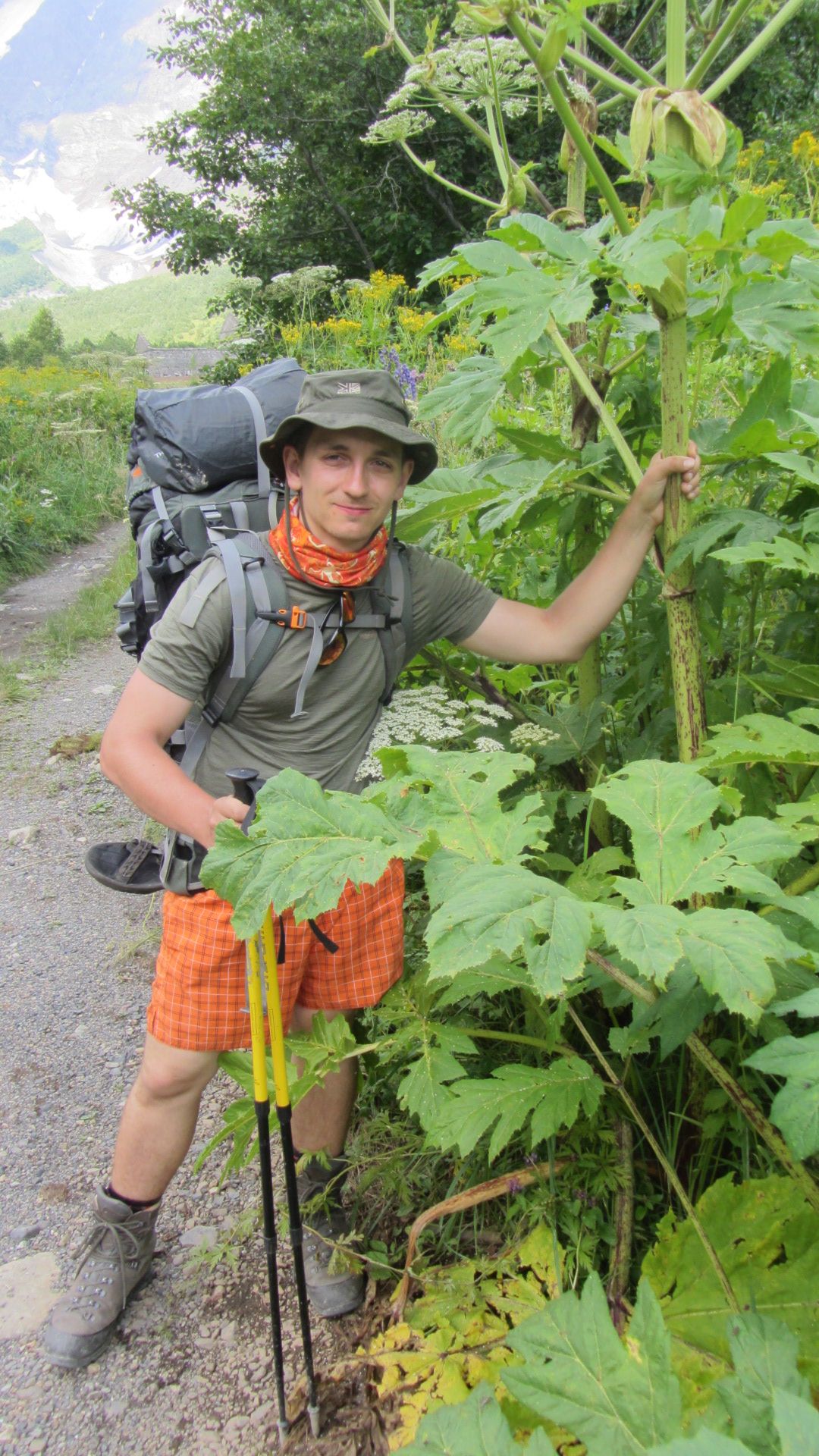
Remember - don't touch the hogweed!

Giant hogweed
"Hey, we almost hit them! Careful, please!"
"Don´t worry. Vasil - Schumacher!"our drive to Truso valley, summer 2016
Not directly related to hiking but I still think it belongs here. Because, paradoxically, one of the most threatening things about hiking in Georgia is reaching the actual mountains. Many Georgian drivers rely way too much on the saints on their dashboards - they drive fast and overtake other cars at blind turns or over hilltops. Together with bad state of many roads and the widespread alcohol consumption, these are the main causes of road accidents in Georgia.
Most of the time, you will reach your destination safely and you can entertain your friends with stories how your taxi overtook the ambulance on lights and sirens. Or how it was, to sit on the front seat of marshrutka rushing on the narrow road at the 70 mph, narrowly passing lying cows and then noticing that your driver didn´t even hold the wheel since he has to readjust his sunglasses, play with his chest hair or do something equally important.
Unfortunately, not all these rides have a happy ending. According to the statistics, a risk of gettings into the car accident is about twice as high compared to European countries, a little higher than in the USA and much lower than most of the Asian countries.
OK, but right now you are probably asking - what can be done to minimize the risk? That depends on the type of transport you are using. If you have a private driver or use a shared taxi, you should be fine. Just tell him to slow down and be vehement enough. He may grumble and the mood may be spoiled, but that´s still much better option than to risk an accident.
If you are using a marshrutka, there is not much you can do. There are no seatbelts and you can´t bribe the driver (but you can try :)), so you can pray that nothing bad happens. So, even after reading the whole article, you didn´t get any meaningful advice - but at least you know what to expect :)

One of our more "exciting" drivers

